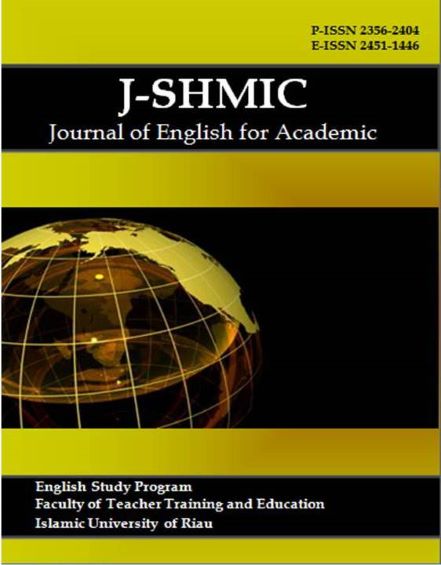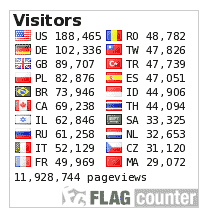Students’ Perceptions and Attitudes towards the Utilization of Duolingo in EFL Learning
Keywords:
Attitude, Duolingo, EFL Learning, PerceptionAbstract
Education sector in the 21st Century has continuously changed and relied more on technology. The evolution of the use of technology in education leads to the emergence of gamification. Duolingo is a language learning platform that provides free language courses through web and mobile apps that instills gamification aspects. The objective of this study is to investigate the students’ perceptions and attitudes towards the utilization of Duolingo in EFL learning. This descriptive study involved twenty students of a non-English education study program through purposive sampling technique. The criteria of selecting the participants were based on the participation in English Learning class and the active use Duolingo for English practice outside the course hours. The researchers employed a questionnaire and an interview to collect the data. The data of the questionnaire were analyzed quantitatively through simple percentage analysis of SPSS. Meanwhile, the data of the interview were analyzed qualitatively through Miles, et al. Model consisting of collection, classification, description, interpretation, and conclusion. The results revealed that the students provided positive feedbacks towards thirty statements of questionnaire and three questions of interview that representing their perceptions and attitudes towards the utilization of Duolingo in EFL learning. The students believed that learning English through Duolingo was easy, fun, engaging, and motivating. In short, the students had positive perceptions and attitudes towards the utilization of Duolingo in EFL learning.
Downloads
References
Agung, A., S., S., N. (2019). Current challenges in teaching English in the least-developed region in Indonesia. SOSHUM: Journal of Social Sciences and Humanities, 9(3), 266-271.
Ahmadi, M., R. (2018). The use of technology in English language learning: A literature review. International Journal of Research in English Education, 3(2), 115-125.
Alfuhaid, S., R. (2021). The utilization of Duolingo to enhance the speaking proficiency of EFL secondary school students in Saudi Arabia. English Language Teaching, 14(11), 9-15.
Al Hamar, M., & Al Sarraf, H. (2020). Advantages of using technology to teach English. International Journal of Social Science and Humanities Research, 8(1), 182-187.
Arumsari & Octaviani, S., K. (2022). Duolingo Mobile Application for English Listening Skill Improvement of Vocational School Students. Journal of English Language and Education, 7(2), 84-95.
Başar, T. & Şahin, L. (2022). Technology integration in teaching English as a foreign language: A content analysis study. Journal of Educational Technology & Online Learning, 5(1), 204-222.
Brick, B., & Cervi-Wilson, T. (2019). Enhancing learners’ professional competence via Duolingo classroom. In C. Goria, L. Guetta, N. Hughes, S. Reisenleutner & O. Speicher (Eds), Professional competencies in language learning and teaching (pp. 19-29). Research-publishing.net
Davudova, E., & Türel, Y., K. (2022). Evaluation of mobile applications in foreign language learning at early age. Journal of Educational Technology & Online Learning, 5(3), 738-753.
Diva, I., Etfita, F., & Wahyuni, S. (2022). Students’ Perceptions of Learning Platform: The Advantages and Disadvantages of Quipper School. J-SHMIC: Journal of English for Academic, 9(1), 42-50.
Ginusti, G., N. (2023). The implementation of digital technology in online project-based learning during pandemic: EFL students’ perspectives. J-SHMIC: Journal of English for Academic, 10(1), 13-25.
Griffin, A. (2022). Duolingo language learning app undergoes ‘biggest ever redesign’ to make it less stressful. Retrieved June 15, 2023, from Independent UK website: https://www.independent.co.uk/tech/duolingo-app-language-learning-update-b2073086.html
Habibie, A. (2020). Duolingo as an educational language tool to enhance EFL students’ motivation in learning. British, 9(1), 13-26.
Hakimantieq, H., Suherdi, D., & Gunawan, W. (2022). Duolingo as a mobile-assisted language learning: a new supplementary of learning basic English reading for EFL students. Edukatif: Jurnal Ilmu Pendidikan, 4(6), 7548 – 7558.
Hernadijaya, N., S. (2020). The use of Duolingo application to enhance junior high school students’ English vocabulary. RETAIN, 8(2), 17-24.
Inayati, N., & Dwi Mawan Karifianto, D., M. (2022). Autonomous online English language learning in Indonesian higher education contexts. MEXTESOL Journal, 46 (1), 1-12.
Jiang, X., et., al. (2021). Evaluating the Reading and Listening Outcomes of Beginning-level Duolingo Courses. Foreign Language Annals, 54, 974-1002.
Kashoob, M., & Attamimi, R. (2021). Exploring Omani EFL students’ perceptions of the newly adopted online learning platforms at the university of technology and applied sciences-salalah. Journal of Education and Learning, 10(2), 28-36.
Malik, H., Humaira, M. A., Komari, A. N., Fathurrochman, I., & Jayanto, I. (2021). Identification of barriers and challenges to teaching English at an early age in Indonesia: an international publication analysis study. Linguistics and Culture Review, 5(1), 217-229.
Miles, M.B., Huberman, A.M. and Saldana, J. (2014) Qualitative Data Analysis: A Methods Sourcebook. Sage, London.
Mofareh, A. (2019). The use of technology in English language teaching. Frontiers in Education Technology, 2(3), 168-180.
Munday, P. (2016). The case for using DUOLINGO as part of the language classroom experience. RIED, 19(1), 83-101.
Niah, S & Pahmi. (2019). The utilization of Duolingo to improve the speaking and listening skills of junior high school students in Pekanbaru. Advances in Social Science, Education and Humanities Research, 373, 54-59.
Novitasari, I., & Purnamaningsih, I., R. (2022). Students’ perceptions of using the Duolingo application as an online English learning medium. Professional Journal of English Education, 5(3), 535-543.
Nushi, M., & Eqbali, M., H. (2017). Duolingo: A mobile application to assist second language learning. Teaching English with Technology, 17(1), 89-98.
Perez, L., C., D. (2020). English language acquisition via Duolingo application: Effectivity and challenges. Lingua Pedagogia: Journal of English Teaching Studies, 2(2), 76-87.
Pinto, R., D., et., al. (2021). Foreign Language Learning Gamification Using Virtual Reality - A Systematic Review of Empirical Research. MDPI: Education Science, 11, 1-19.
Pitoyo, M., D., Sumardi, & Asib, A. (2020). Gamification-based assessment: The washback effect of quizzes on students’ learning in higher education. International Journal of language Education, 4(1), 1-10.
Pramesti & Susanti, A. (2020). Students’ perceptions of the use of mobile application Duolingo for learning English. International Journal of Scientific & Technology Research, 9(1), 1800-1804.
Putri, L., M., & Islamiati, A. (2018). Teaching listening using Duolingo application. PROJECT: Professional Journal of English Education, 1(4), 460-465.
Redjeki, I., S., & Muhajir, R. (2021). Gamification in EFL classroom to support teaching and learning in 21st century. Journal of English Educators Society, 6(1), 68-78.
Riasati, M., J., Allahyar, N., & Tan, K., E. (2012). Technology in language education: Benefits and barriers. Journal of Education and Practice, 3(5), 25-31.
Sarie, D., A., P., & Anggraeni, A. (2020). The implementation of Duolingo to teach descriptive text in scientific approach. Professional Journal of English Education, 3(6), 711-716.
Saydakhmatova, I., H. (2020). Use of technology in English language learning. JournalNX- A Multidisciplinary Peer Reviewed Journal, 6(11), 209-211.
Syahputra, M. (2019). Duolingo gamification: Does it reduce students’ grammatical errors in writing? Getsempena English Education Journal (GEEJ), 6(1), 11-22.
Turayeva, X., T., & Kholmurodova, M., A. (2022). Advantages and disadvantages of digital technologies in language teaching. Eurasian Journal of Learning and Academic Teaching, 3, 16-18.
Ünal, E., & Güngör, F. (2021). The continuance intention of users toward mobile assisted language learning: The case of DuoLingo. Asian Journal of Disctance Education, 16(2), 197-218.
Zheng, C., & Fisher, L. (2023). Opening the “black box”: how out-of-class use of Duolingo impacts Chinese junior high school students’ intrinsic motivation for English. ECNU Review of Education, 1-25.
Published
How to Cite
Issue
Section
This is an open-access article distributed under the terms of the Creative Commons Attribution-ShareAlike 4.0 International License which permits unrestricted use, distribution, and reproduction in any medium. Users are allowed to read, download, copy, distribute, search, or link to full-text articles in this journal without asking by giving appropriate credit, providing a link to the license, and indicating if changes were made. All of the remixes, transform, or build upon the material must distribute the contributions under the same license as the original.











